A pleasant surprise — and a break from the cold!
The Maritime Museum of the Atlantic is the resting place of quite a few shipwrecks, including a little wreck once called the Titanic. This is Halifax, after all — home to an area of the world that’s seen more than a few shipwrecks — and plenty of them are remembered here.
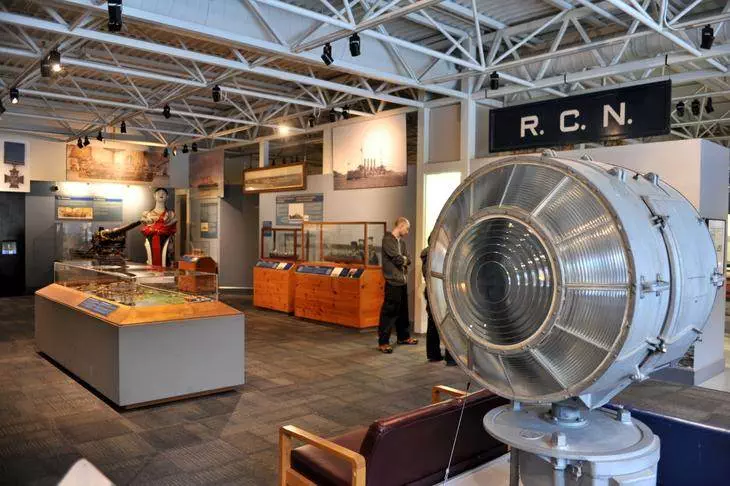
Situated along the Nova Scotian harbor (harbour?) and complete with a Real, Actual Ship in the bay, the museum starts off by recounting quite a bit of history. Since this is Canada, all displays come in English and French.
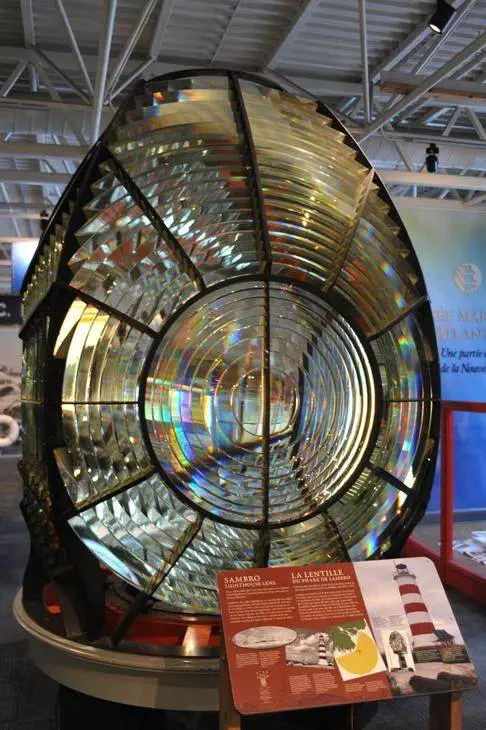
The crystal Fresnel lens in the Sambro Lighthouse from 1906 to 1967, which made it visible for 17 nautical miles. The lighthouse, first built in 1758, is the oldest surviving lighthouse in North and South America. For the photography buffs reading this post, this is a fun place to play with reflections and the prism-like effects.
Some of the history covered here involves the lighthouse, but also the ships, the personnel, and the wars:
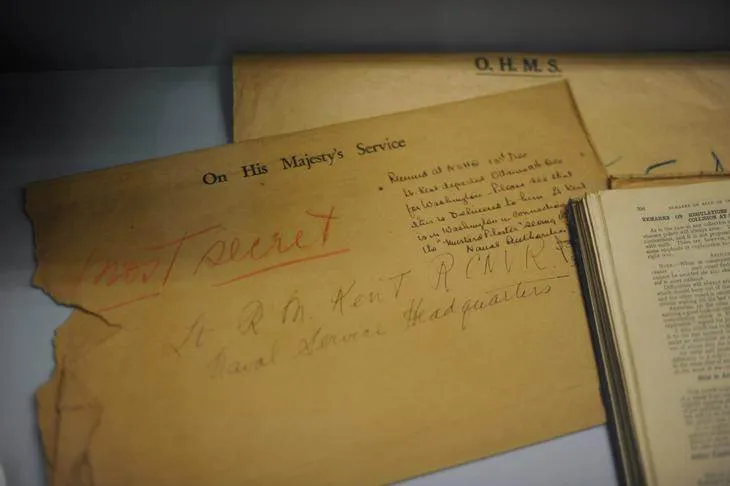
Lest this look like something out of a James Bond film, England has had a ‘Her Majesty’s Service’ since Bond first became an icon. Plenty of ships are around, along with a contact mine:
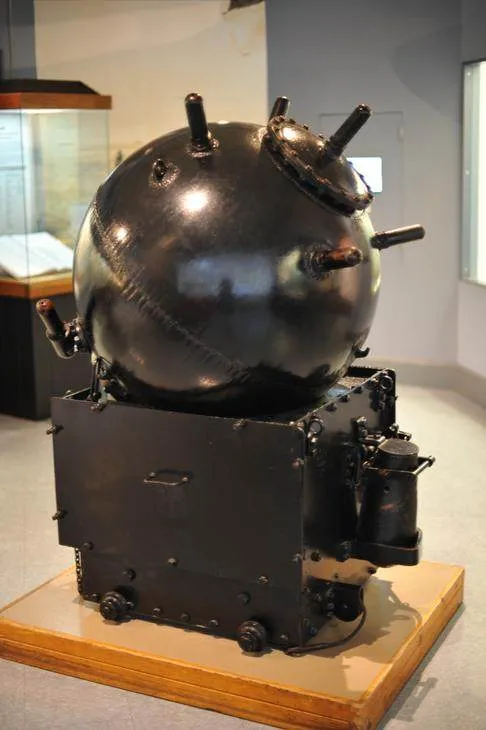
Activated when an incoming ship crushed one of the spikes / horns, this type of mine was used in World War I and II. It’s also as heavy as it looks — I picture an entire field trip’s worth of elementary schoolers trying to move it…
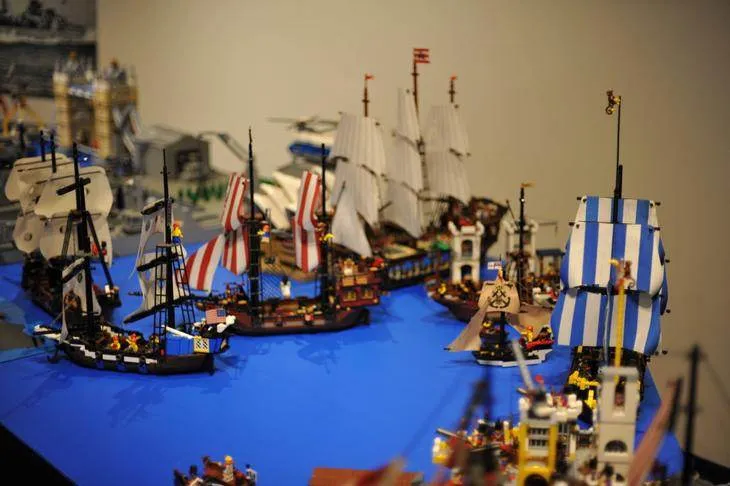
Speaking of elementary schoolers, did I mention the LEGO setup? Taking up the equivalent of a couple displays, the two displays here feature the land and the sea. A paper within the brochure challenges visitors to the scavenger hunt, complete with about 75 different things to see:

There’s plenty to see and take in here, but the City by the Sea display won’t be here forever.
Once past the first section, the time machine rewinds to an earlier time:
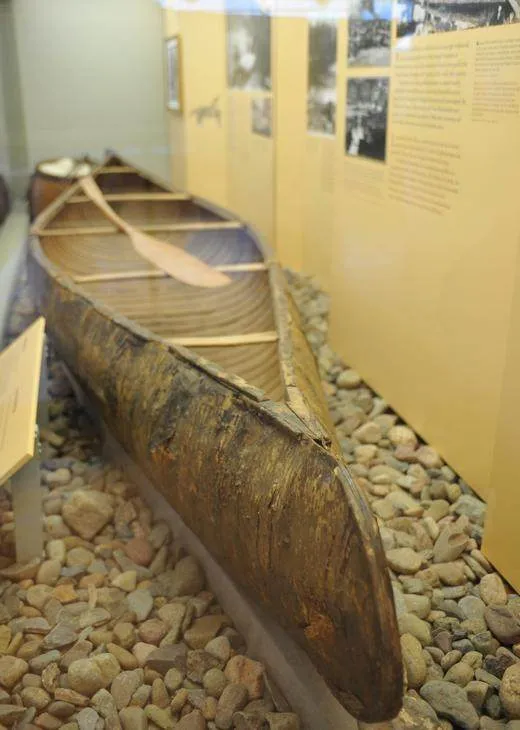
Meet the Malti Pictou canoe, a birchback boat built by a First Nations chief and used by his son during the re-enactment of the traditional porpoise hunt. It’s one of the few larger items shielded by glass, which should give some indication of its prized nature. Also around (but not pictured here) is the tragic tale of what happened when a French munitions ship and a Norwegian ship collided in Halifax’s harbor. Spoiler alert: the collision completely destroyed several square blocks, damaged a couple dozen more, and killed about 1,650 people.
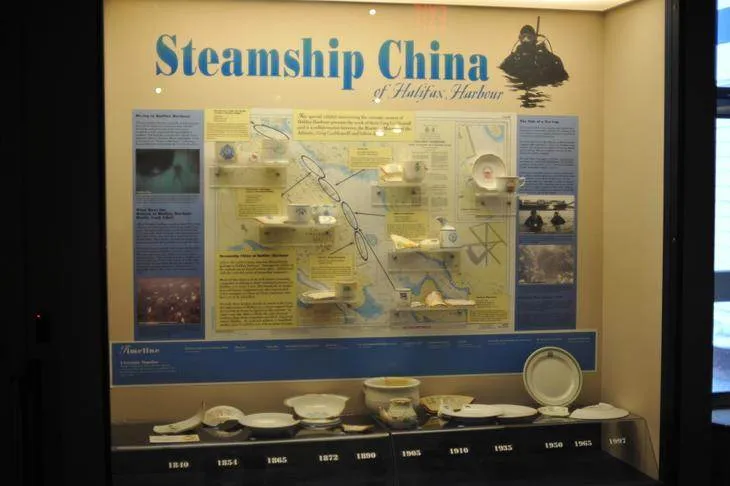
Up on the second floor, the stories stay focused on the history of shipwrecks:

Not all of these pieces are from shipwrecks, although all represent a piece of china that managed to find its way overboard. The display proclaims these pieces as a sign of Halifax’s status as a major seaport. Some pieces of china on display here are from smaller steamboat companies not yet identified, but all are from the harbor.
Not pictured nearby is the remainder of the museum’s collection, kept behind glass and in low-light conditions.
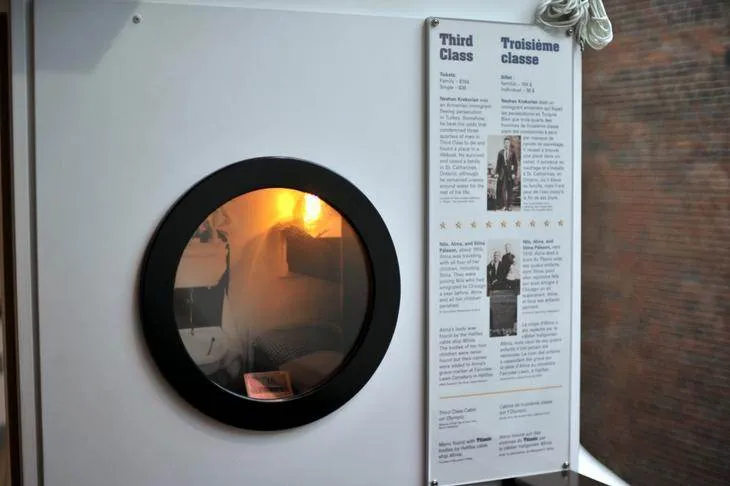
One highlight of the museum: a significant section based around the Titanic. While far from the only shipwreck in the area (one poster describes hundreds over the last couple centuries), it’s certainly of the most high-profile. You see third-class above, complete with the stories of a couple of folks from that class. First- and second-class are also adequately described, with a couple of menus on display to boot.
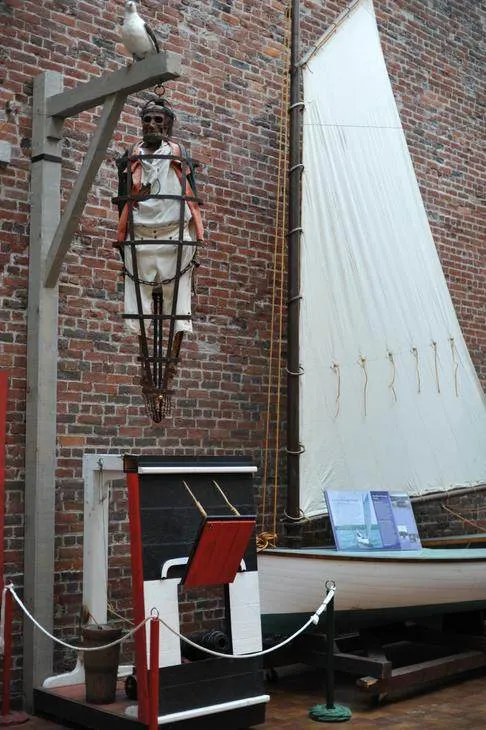
Now back at the front of the museum, take in the sight of what happens when a pirate is caught. There’s no Pirates of the Caribbean nonsense — a pirate caught in Halifax could expect to be hanged, tarred, hung in chains, and gibbeted for the world to see. Quite the sobering sight, and a shame there wasn’t more on the subject of pirates inside…
The harbor / riverside, at least during the non-freezing seasons, offers plenty more. Get past the Acadia and the restaurants no larger than a bedroom and you get this guy:

The full-sized version of George the Valiant from Theodore Tugboat (think Thomas the Train, just on water) is kept here as well.
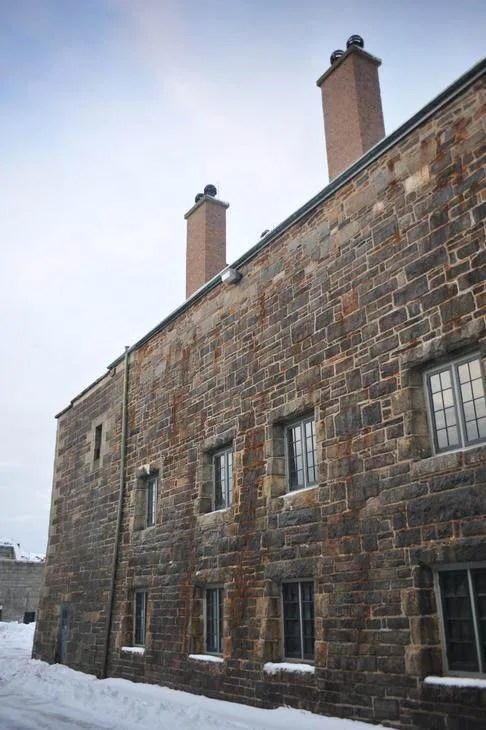
While the museum itself is great for an hour and a half, it’s the harbor / riverside that makes it at least a half-day trip. There’s that much to see and do — and it’s all walkable. Well, not during the winter, at least — the spring or summer, most definitely.
If you’ve always wondered what Halifax and Lunenberg look like in winter, wonder no more.
Name: Maritime Museum of the Atlantic
Address: 1675 Lower Water St, Halifax, NS B3J 1S3, Canada
Hours: Typically 9:30am-5:00pm, open later during the high season, closed Mondays during the low season, open 1pm-5pm during low-season Sundays.
Admission: $5 CAD during the low season (Nov-April), $9.25 CAD during the high season (May-October)
Phone: 1–902–424–7490
Website: http://maritimemuseum.novascotia.ca/


